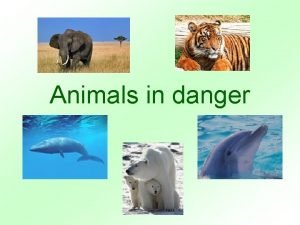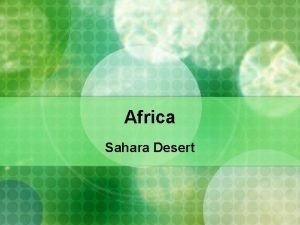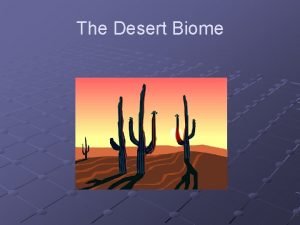desert There are many animals in the desert






- Slides: 6

desert

There are many animals in the desert from camels to snakes, but there still is quite a bit of interesting facts about desert animals that people don’t know about. The animals that live in the desert usually have special adaptations that allow them to survive the extreme temperatures and conditions that are in a desert. A good example of an animal with special adaptations is the camel. A camel can drink allot of water in one day or survive for a relatively long time without drinking any water.

Desert Plants � When you imagine a desert, what do you think of first? Maybe it's sand, heat, or Gila monsters, but most likely it's cactus. Cacti are probably the most memorable characteristic of the desert, but there's a lot more � � � � Barrel Cactus Brittle Bush Chainfruit Cholla Creosote Bush Crimson Hedgehog Cactus Desert Ironwood Joshua Tree Jumping Cholla Mojave Aster Ocotillo Palo Verde Pancake Prickly Pear Cactus Saguaro Cactus Soaptree Yucca Triangle-leaf Bursage

In the desert the ground is super hot because the sun's rays beat down on it directly overhead. There is not a lot of atmosphere to protect it from radiant energy. By the way, approximately 1 in. (. 25 cm) of rain falls in dry deserts per year. The average annual temperature of these miles of hot sand is 64° F (18° C).

Interesting Facts �There a number of different definitions to describe a desert but they are typically areas that receive extremely low amounts of rain. Deserts generally receive less than 40 cm (16 in) of rain a year. �Around one third of the Earth's surface is covered in deserts. �The original meaning of the word desert is 'an abandoned place'. �Many of the ice free regions of the Arctic and Antarctic are known as polar deserts. �Only around 20% of the deserts on Earth are covered in sand. �Areas covered in ice or snow can sometimes be called 'cold deserts', compared to 'hot deserts' in warmer areas.

http: //www. ucmp. berkeley. edu/exhibits/biomes/deserts. phphttp: //www. ucmp. berkeley. edu/exhibits/bio mes/deserts. phphttp: //www. ucmp. berkeley. edu/exhibits/biomes/deserts. phphttp: //www. ucmp. berkeley. edu/exhibits/biomes/ dhttp: //www. shedexpedition. com/gobi-desert-china/ http: //www. treknature. com/gallery/photo 148179. htm http: //www. nps. gov/cagr/forkids/mammals. htm http: //www. aprilsayre. com/category/animal-of-the-month/feed/ http: //www. buzzle. com/articles/gobi-desert-facts. html http: //www. mightytravels. com/13232755/photo_review_desert_park_phoenix. php http: //www. blueplanetbiomes. org http: //www. defenders. org/desert/basic-facts http: //www. sciencekids. co. nz/sciencefacts/earth/desert











